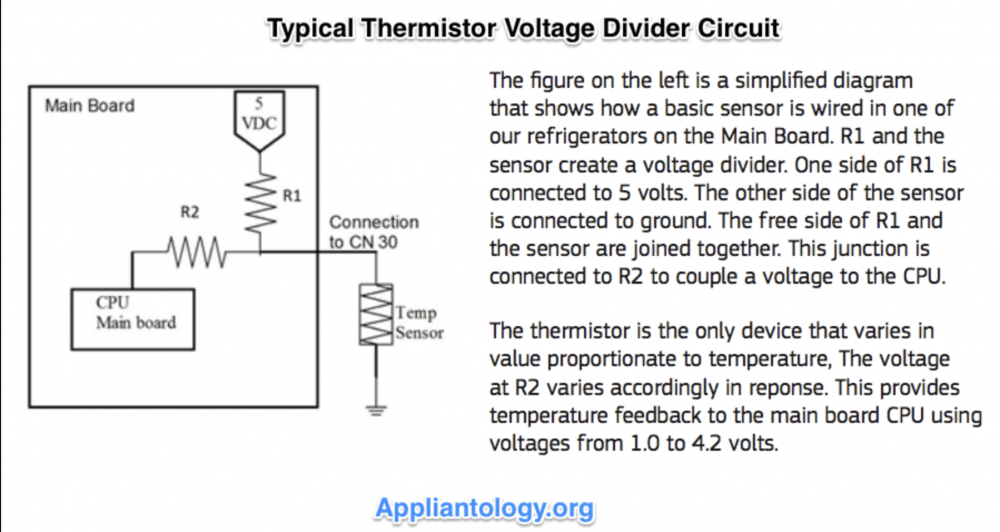Voltage Dividers and how Control Boards Read Thermistor Input
We're all familiar with how thermistors work: their resistance varies with temperature, which in turn varies the voltage drop across them. The control board then reads that voltage drop and determines the sensed temperature based on that.
But those with a bit of basic electricity knowledge might scratch their heads a bit if they think about this. Thermistors are almost always drawn on schematics such that they aren't in series with anything else -- it gets its 5 VDC supply and DC ground directly from the control board, with no loads between. And a single load in a circuit will always drop all the voltage supplied to it, regardless of its resistance.
So how is it possible that the voltage drop across the thermistor changes with its resistance? Well, the truth is that there's more going on here than we're shown on most schematics, all built into the control board.
This image shows the parts of the circuit that are built into the circuitry of the control board and explains how it works.
Essentially, the control board is acting just like your voltmeter when you measure across a load. It has one "lead" connected to the hot side of the thermistor, and another "lead" (not shown in the picture) connected to ground, which is an EEP for the grounded side of the thermistor.
Related post: Are thermistors interchangeable?
Want to learn more about the underlying technologies common to all appliances? Click here to check out the online Core Appliance Repair Training Course over at the Master Samurai Tech Academy.
-
.png) 6
6
-
 1
1

.png.aa21533c6656a1cb054a172848652cb2.png)



4 Comments
Recommended Comments